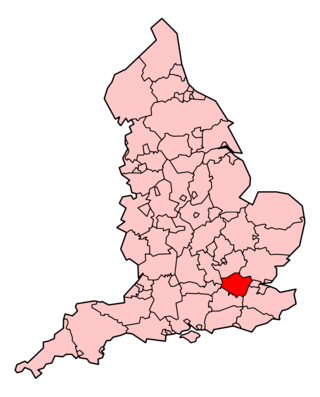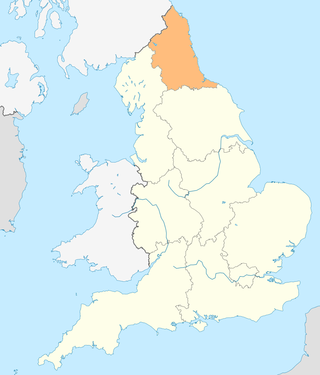
The London Ambulance Service NHS Trust (LAS) is an NHS trust responsible for operating ambulances and answering and responding to urgent and emergency medical situations within the London region of England. The service responds to 999 phone calls across the region, and 111 phone calls from certain parts, providing triage and advice to enable an appropriate level of response.

The North West Ambulance Service NHS Trust (NWAS) is the ambulance service for North West England. It is one of ten ambulance trusts providing England with Emergency medical services, and is part of the National Health Service, receiving direct government funding for its role.

The South Western Ambulance Service NHS Foundation Trust (SWASFT) is the organisation responsible for providing ambulance services for the National Health Service (NHS) across South West England. It serves the council areas of Bath and North East Somerset, Bournemouth, Christchurch and Poole Council, Bristol, Cornwall, Devon, Dorset, Gloucestershire, North Somerset, Plymouth, Isles of Scilly, Somerset, South Gloucestershire, Swindon, Torbay and Wiltshire.

Yorkshire Ambulance Service NHS Trust (YAS) is the NHS ambulance service covering most of Yorkshire in England. It is one of ten NHS Ambulance Trusts providing England with emergency medical services as part of the National Health Service it receives direct government funding for its role.

The South Central Ambulance Service NHS Foundation Trust (SCAS) is the ambulance service for the counties of Berkshire, Buckinghamshire, Oxfordshire and most of Hampshire. It is a foundation trust of the National Health Service, and one of ten NHS ambulance trusts in England. As of August 2022, SCAS is currently rated Inadequate by the CQC following multiple failings within the trust. SCAS is the only Ambulance Service in England to have received this rating.

The East of England Ambulance Service NHS Trust (EEAST) is an NHS trust responsible for providing National Health Service (NHS) ambulance services in the counties of Bedfordshire, Cambridgeshire, Essex, Hertfordshire, Norfolk and Suffolk, in the East of England region. These consist of approximately 6.2 million people across an area of 7,500 square miles (19,000 km2).

The North East Ambulance Service NHS Foundation Trust (NEAS) is an NHS foundation trust responsible for providing NHS ambulance services in North East England. Headquartered in Newcastle upon Tyne, NEAS provides emergency medical services to the metropolitan boroughs of Newcastle upon Tyne, Gateshead, North Tyneside, South Tyneside and City of Sunderland; the ceremonial counties of County Durham and Northumberland; and the area of North Yorkshire commonly known as Teesside. NEAS was formed on 1 July 2006, following the merger of the existing North East Ambulance Service with the Tees division of the Tees, East and North Yorkshire Ambulance Service (TENYAS). Northumbria Ambulance Service and County Durham Ambulance Service had previously merged on 1 April 1999.

The West Midlands Ambulance Service University NHS Foundation Trust (WMAS) is responsible for providing NHS ambulance services within the West Midlands region of England. It is one of ten ambulance trusts providing England with emergency medical services, and is part of the National Health Service.

Emergency medical services in the United Kingdom provide emergency care to people with acute illness or injury and are predominantly provided free at the point of use by the four National Health Services (NHS) of England, Scotland, Wales, and Northern Ireland. Emergency care including ambulance and emergency department treatment is only free to UK residents and a charge may be made to those not entitled to free NHS care.
The Sussex Partnership NHS Foundation Trust provides mental health and learning disability services to the people of Brighton & Hove, East Sussex and West Sussex. The trust also provide some community services in Hampshire for children and young people with mental health problem. They work in partnership with those who use their services, with their staff, with NHS and social care agencies and with the voluntary sector.

East Kent Hospitals University NHS Foundation Trust is one of the largest hospital trusts in England. It runs the Kent and Canterbury Hospital (Canterbury), William Harvey Hospital (Ashford), Queen Elizabeth The Queen Mother Hospital (Margate), Buckland Hospital (Dover), and the Royal Victoria Hospital (Folkestone) – and some outpatient facilities in the East Kent and Medway areas in England.

Crawley Hospital is a National Health Service hospital in Crawley, a town and borough in West Sussex, England. Since 2006 it has been part of the Sussex Community NHS Trust, which has overall management responsibility. Surrey and Sussex Healthcare NHS Trust also provides some services. The hospital is located in the West Green neighbourhood of Crawley, near the town centre.

Air Ambulance Kent Surrey Sussex (KSS) is an organisation providing emergency medical services through the provision of a helicopter air ambulance covering the four English counties of Kent, Surrey, East Sussex and West Sussex, which are served by the South East Coast Ambulance Service. The service is funded by the Kent, Surrey & Sussex Air Ambulance Trust which is a registered charity, raising money from public and private donations in excess of £15 million every year. The charity's aircraft are based and maintained at Redhill Aerodrome in Surrey. Its headquarters and forward operating base are at Rochester Airport in Kent.
Kent and Medway NHS and Social Care Partnership Trust was formed in April 2006 by a merger between East Kent NHS and Social Care Partnership Trust and West Kent NHS and Social Care Trust.
Brighton and Sussex University Hospitals NHS Trust (Now disbanded), abbreviated as BSUH, was an NHS foundation trust ran two acute hospitals, the Royal Sussex County Hospital in Brighton and the Princess Royal Hospital in Haywards Heath. It also operated a number of other hospitals and medical facilities, including the Royal Alexandra Children's and Sussex Eye Hospitals in Brighton, Hove Polyclinic, the Park Centre for Breast Care at Preston Park and Hurstwood Park Neurosciences Centre in Haywards Heath. The Trust also provided services in Brighton General Hospital, Lewes Victoria Hospital, Bexhill Renal Satellite Unit, Eastbourne District General Hospital and Worthing Hospital.
Out-of-hours services are the arrangements to provide access to healthcare at times when General Practitioner surgeries are closed; in the United Kingdom this is normally between 6.30pm and 8am, at weekends, at Bank Holidays and sometimes if the practice is closed for educational sessions.
Healthcare in London, which consumes about a fifth of the NHS budget in England, is in many respects distinct from that in the rest of the United Kingdom, or England.

Healthcare in Kent has, from 1 July 2022, been mainly the responsibility of the Kent & Medway Integrated Care Board. Certain specialised services are directly commissioned by NHS England, coordinated through the South East integrated regional team. Some NHS England structures are aligned on a Kent and Medway basis, others on a South East basis and there is liaison with London to provide many tertiary healthcare services.
Healthcare in Sussex is the responsibility of NHS Sussex, an integrated care system and the NHS Sussex Partnership NHS Foundation Trust.















